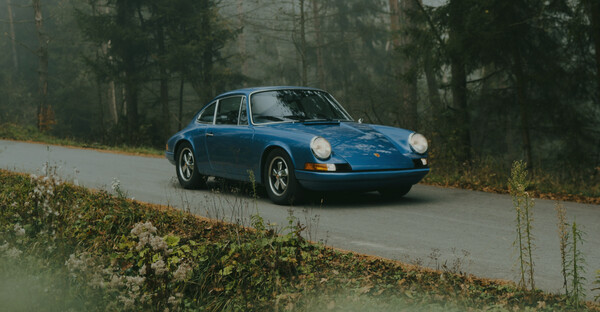Description
The 1969 model year marked the first important changes to Porsche’s well-received 911 series. The wheelbase was lengthened by 2. 4 in., which served to greatly enhance the car’s handling characteristics. The fenders were slightly flared to make room for larger wheels and tires, and the interior heating and cooling system was improved, as Porsche made steady improvements on the design. Three models were offered: the base 110-hp 911 T, the 140-hp 911 E, and the 170-hp 911 S. The lower-priced T was fitted with a magnesium-cased, cast-iron-cylindered engine with Weber carburettors, while the E and S used Bosch mechanical fuel injection.
This eye-catching 911 T coupe left the Karmann plant on the 7th March 1969, finished in Irish Green with a leather interior, however a copy of the factory build records doesn’t list the interior colour. It was delivered to its first owner with a plethora of desirable options including a five-speed manual transmission, rubber bumpers (with horns front and rear), tinted glass, radio antenna and loud speaker, together with Koni shock absorbers.
Chassis ‘the details below’ has subsequently been the subject of a full and comprehensive restoration by marque specialist Lee Mayor, with work carried out over a two year period (between 2019 – 2021). A matching-numbers example; the original powerplant having been enlarged to 2. 2 litres (approx. 170bhp), with the engine case line honed, bigger cylinder head ports and valves fitted, ‘E’- specification camshafts and a large capacity oil pump. Riding on forged Fuchs alloy wheels, the 911 also benefitted from new Koni sports dampers and front / rear anti roll bars. Stopping is aided by aluminium ’S’-specification brake callipers and vented discs, together with a big bore master cylinder. The donor vehicle had covered some 95, 000 miles at the point in which the restoration commenced, however the 911 has seen very little use subsequently and is absolutely fresh and ready to use and enjoy. The interior benefits from upgraded period-style Recaro seats, trimmed in leather, whilst the rest of the car is largely standard and to desirable factory specification.
UK-registered, with a current V5c document; ’PFJ 410G’ is supplied with a hardback photographic book documenting the restoration process, lifting jack and steel spare wheel neatly stowed in the front compartment.


























